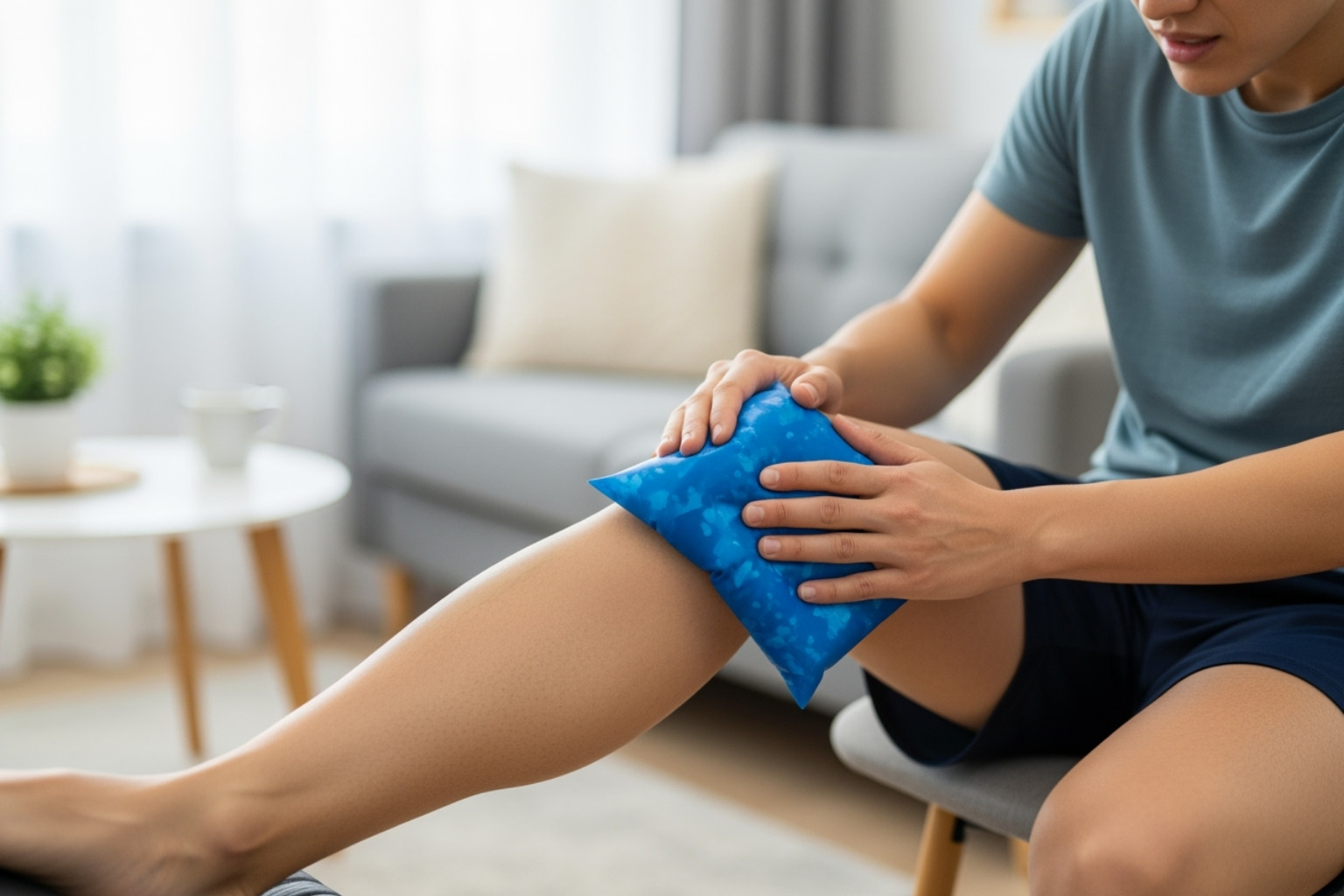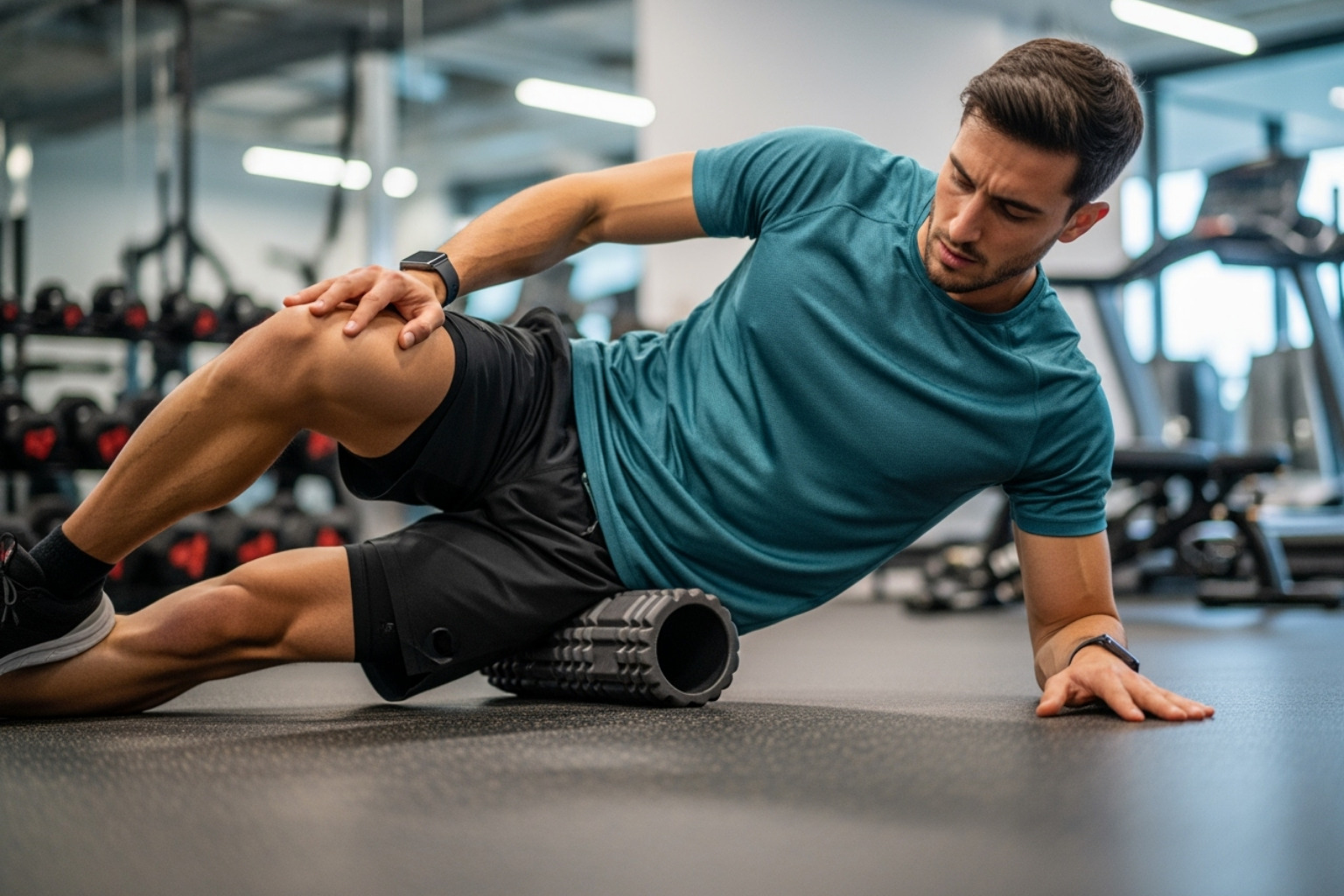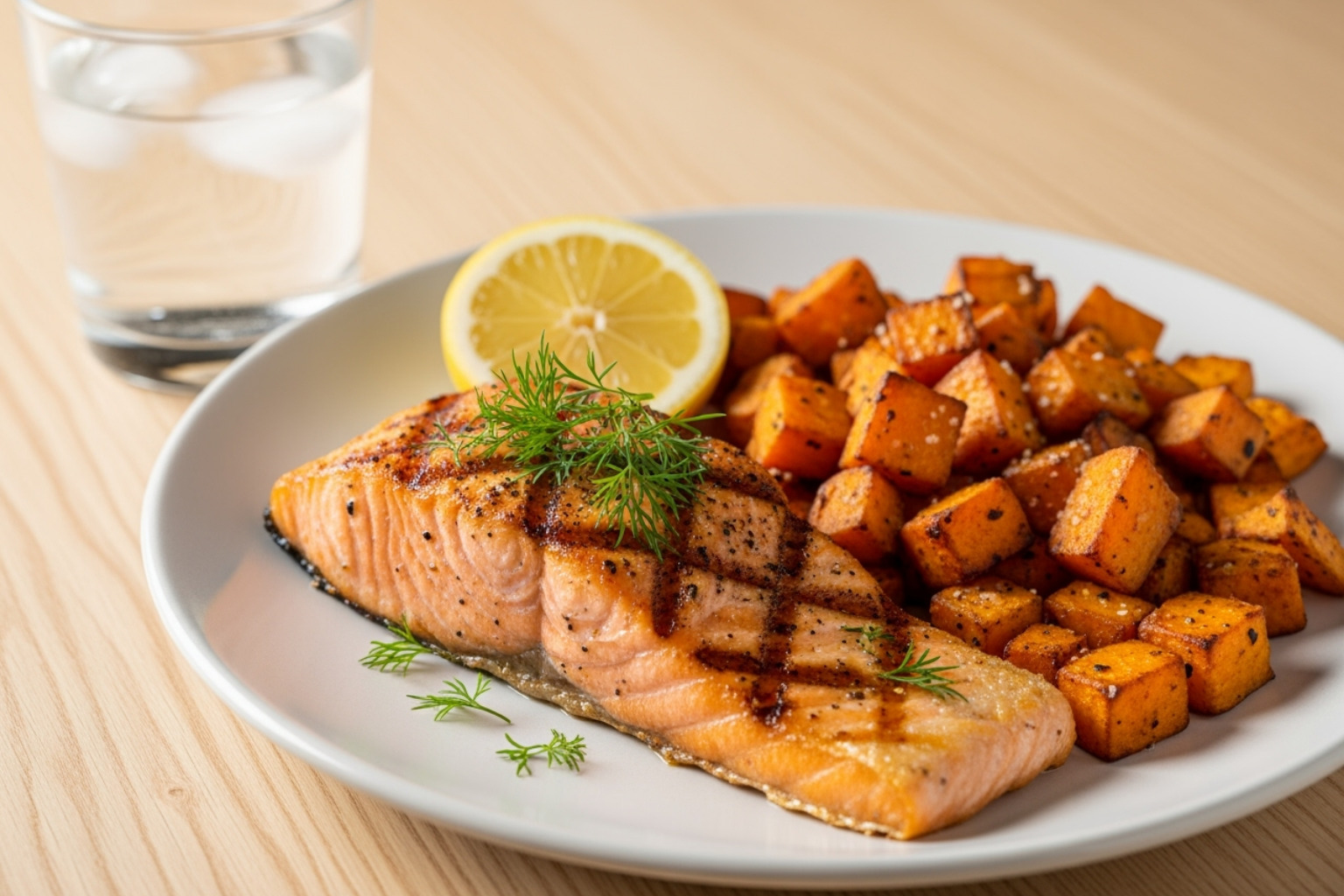Why Do We Get Sore After Exercise?
Finding a good muscle soreness remedy is a top priority for athletes and fitness lovers. That deep ache you feel after a tough workout isn't just discomfort—it's a sign your body is adapting and getting stronger.
Quick Answer: Top Muscle Soreness Remedies
- Cold therapy - Apply ice packs within 24-48 hours to reduce inflammation
- Heat therapy - Use heating pads or warm baths after 48 hours to increase blood flow
- Gentle movement - Walk, swim, or do light yoga to boost circulation
- Massage or foam rolling - Release muscle tension and improve flexibility
- Topical relief creams - Apply menthol or lidocaine-based products for fast relief
- Proper hydration - Drink plenty of water to flush out waste products
- Anti-inflammatory foods - Eat tart cherries, turmeric, and omega-3 rich foods
- Quality sleep - Get 7-9 hours for optimal muscle repair
- Protein and carbs - Refuel muscles within 30-60 minutes post-workout
- Proper warm-up/cool-down - Prepare muscles before and gradually recover after exercise
What causes muscle soreness? When you challenge your body with new or intense movements, you create microscopic tears in your muscle fibers. Your body's natural inflammatory response kicks in to repair this damage, resulting in Delayed Onset Muscle Soreness (DOMS). This is the familiar stiffness and tenderness that, according to the American College of Sports Medicine.pdf), appears 12 to 24 hours after exercise, with peak soreness occurring between 24 to 72 hours.
This process is normal and essential for building stronger, more resilient muscles. However, you don't have to suffer through days of discomfort. Common triggers for soreness include starting a new routine, increasing intensity too quickly, and eccentric movements like running downhill.
I'm Tony Enrico, and at Neuropasil, we develop effective muscle soreness remedy solutions for athletes and active adults. Our mission is to help people find real relief from pain with simple, science-backed strategies you can use today.

Immediate Muscle Soreness Remedy: 5 Fast-Acting Tips
When post-workout aches set in, you want fast relief. These proven strategies can soothe tender muscles by reducing inflammation, improving blood flow, and easing immediate discomfort.

1. Use Heat and Cold Therapy Strategically
The "ice or heat?" debate depends on timing. Both are effective muscle soreness remedy options but work best at different stages.
Cold therapy (cryotherapy) narrows blood vessels to reduce blood flow, which numbs pain and decreases inflammation and swelling. It's best for the first 24-48 hours after exercise. Apply an ice pack wrapped in a thin cloth for 20 minutes at a time, a few times a day. Avoid applying ice for more than an hour at a time or on numb skin.
Heat therapy does the opposite, widening blood vessels to increase blood flow. This delivers nutrients to your muscles, relaxes tissue, and reduces stiffness. Heat is ideal for chronic stiffness after the initial 48-hour inflammation period. Use a heating pad or take a warm bath for about 10 minutes. Be careful to avoid burns.
Research shows that cold therapy immediately after exercise can be superior for reducing pain, while heat is excellent for lingering tightness a few days later.
2. Try Gentle Movement and Active Recovery
It may sound counterintuitive, but gentle movement—or active recovery—is an excellent muscle soreness remedy. While rest is crucial for serious injuries, light activities like walking, easy cycling, or swimming boost circulation to your sore muscles. According to the American Council on Exercise, this increased blood flow helps flush out metabolic waste and delivers the oxygen and nutrients needed for repair, helping to prevent stiffness. Even a 20-minute walk can make a significant difference. For more pro-level strategies, see our guide on recovering like a pro.
3. Get a Massage or Use a Foam Roller
Massage is a powerful, science-backed tool for muscle recovery. It relieves tension, restores blood flow, and can significantly reduce DOMS discomfort. The Cleveland Clinic reports that massage may alleviate pain from DOMS by as much as 30%.

For a more accessible option, try self-myofascial release with a foam roller. Roll slowly over tender spots for about 30 seconds to break down muscle adhesions and improve flexibility. Massage guns also use vibration to warm tissue and boost circulation. Use them for 2-3 minutes per muscle group with moderate pressure.
4. Apply a Topical Muscle Soreness Remedy
For targeted relief, topical creams and gels deliver active ingredients directly through the skin. Menthol provides a cooling sensation that distracts from pain, while Lidocaine acts as a local anesthetic to numb nerve endings. Arnica, a natural herb, offers anti-inflammatory properties.
At Neuropasil, our fast-acting topical creams use natural ingredients like Aloe, Urea, and Menthol to provide localized comfort. Customers use them for everything from post-workout soreness to strains and sprains. You get relief exactly where you need it without taking pills. Learn more in our ultimate guide to muscle relief cream.
5. Reconsider Post-Workout Stretching
Contrary to popular belief, stretching after exercise isn't a miracle cure for soreness. A comprehensive Cochrane Review found that stretching does not significantly reduce post-exercise soreness. In fact, aggressive stretching on inflamed muscles can sometimes make discomfort worse.
So, what's the takeaway? Gentle stretching after a workout can still improve flexibility and range of motion, but don't expect it to eliminate soreness. If a stretch causes sharp pain, back off. Focus on dynamic stretches (controlled movements) during your warm-up and save gentle static stretches (holding positions) for your cool-down.
Fuel Your Recovery: The Role of Nutrition and Hydration
What you eat and drink is an essential part of any effective muscle soreness remedy. Recovery happens from the inside out, and proper nutrition and hydration can make the difference between bouncing back quickly or feeling sore for days.

6. Hydrate, Hydrate, Hydrate
Water is a critical recovery tool. Dehydration makes muscles tighter and more prone to injury, and studies show it can worsen post-workout aches. Water helps flush out metabolic waste from your muscles and delivers the oxygen and nutrients they need to repair. It also maintains your electrolyte balance, which is crucial for proper muscle function and preventing cramps. The American Council on Exercise recommends drinking 7 to 10 ounces of fluid every 10 to 20 minutes during exercise. More importantly, stay consistently hydrated throughout the day to keep your muscles healthy. For more tips, check out our recovery guide.
7. Refuel with Protein and Carbohydrates
After a workout, your muscles are primed for nourishment. The key nutrients they need are protein and carbohydrates.
Protein provides the amino acids necessary to repair the micro-tears in your muscle fibers, which are the source of DOMS. Without enough protein, your muscles can't recover efficiently. Carbohydrates are just as important, as they replenish the muscle glycogen (energy stores) you used during exercise. Consuming carbs and protein together accelerates recovery.
Aim to eat within 30 to 60 minutes after your workout. Experts suggest this timing helps maximize glycogen replenishment and muscle protein synthesis. Great high-protein recovery snacks include low-fat chocolate milk, Greek yogurt with berries, a quality protein shake, grilled chicken with sweet potatoes, or legumes like lentils and black beans with whole grains.
8. Eat Anti-Inflammatory Foods as a Natural Muscle Soreness Remedy
While inflammation is a natural part of healing, excessive inflammation can prolong pain. You can help manage it by eating foods rich in antioxidants and anti-inflammatory compounds.
- Tart cherries contain compounds that can decrease symptoms of exercise-induced muscle damage. One study found that tart cherry juice significantly reduced muscle soreness after intense exercise.
- Turmeric and ginger are powerful inflammation fighters, with studies showing their compounds (curcumin and gingerols, respectively) can reduce exercise-induced inflammation and pain.
- Omega-3 fatty acids, found in fatty fish like salmon, flaxseeds, and walnuts, have been shown in research to reduce muscle soreness and protect joints.
- Leafy greens (spinach, kale) and dark berries (blueberries, blackberries) are packed with antioxidants that combat exercise-induced oxidative stress.
- Pineapple contains an enzyme called bromelain, which may help reduce pain and swelling. Cruciferous vegetables (broccoli, Brussels sprouts) can also help reduce soreness.
Long-Term Strategies for Prevention and Recovery
While immediate relief is helpful, the best approach is building habits that prevent excessive soreness in the first place. A smart muscle soreness remedy strategy involves consistent training, gradual progression, and listening to your body to avoid overtraining and injury.
9. Prioritize Quality Sleep
Some of your best fitness gains happen while you sleep. During deep sleep, your body releases Human Growth Hormone (hGH), which is vital for repairing tissue, building muscle, and metabolizing fat. Sleep also boosts protein synthesis, the process your cells use to repair those microscopic muscle tears and make your muscles stronger. Research shows that this process during sleep is crucial for how our brains and bodies adapt to new physical challenges.
According to the CDC, most adults need 7-9 hours of quality sleep per night. A consistent sleep schedule and a cool, dark, quiet environment can significantly improve how quickly you bounce back from tough workouts. Good sleep isn't just about feeling rested; it's about giving your muscles the time they need to rebuild.
10. Perfect Your Warm-Up and Cool-Down
Your warm-up and cool-down are crucial for preventing soreness and supporting recovery. Don't skip them.

A proper warm-up prepares your body for work. It gradually increases your heart rate and blood flow, making muscles more pliable and less prone to injury. The American Heart Association recommends a 10-15 minute warm-up with light cardio and dynamic stretches like leg swings and arm circles.
Your cool-down is equally important for transitioning your body back to a resting state. It gradually lowers your heart rate, prevents blood from pooling in your limbs, and helps reduce post-exercise stiffness. Spend another 10-15 minutes on light activity and gentle static stretches, holding each for 20-30 seconds, a duration supported by the American Heart Association. This simple habit is one of the most effective ways to reduce muscle soreness after a workout.
When to See a Doctor for Muscle Pain
Most post-workout aches are a normal part of getting stronger, but some types of pain can be a red flag. It's important to know the difference between the satisfying fatigue of a good workout and pain that signals a problem.
While Neuropasil is designed to provide relief, it's crucial to know when to call your doctor. Seek professional medical attention if you experience any of the following:
- Sharp, debilitating pain that comes on suddenly or prevents normal activities.
- Significant swelling and redness, especially if the area is warm to the touch, which could indicate a serious injury or infection.
- Pain that lasts longer than 5-7 days without improving or gets worse. Normal DOMS typically resolves within this timeframe, as noted by health resources like NHS Inform.
- Dark-colored urine after intense exercise. This can be a sign of rhabdomyolysis, a dangerous condition requiring immediate medical care, as highlighted by the CDC.
- Signs of infection, such as fever, chills, or spreading redness.
- Chest pain, an abnormal heartbeat, or shortness of breath. These symptoms require emergency medical care.
According to the Cleveland Clinic, you should also see a doctor for muscle pain accompanied by unexplained fatigue, general weakness, or a noticeable limp. If you need to find a specialist, resources like NYU Langone Health can help.
Trust your instincts. Neuropasil is an effective muscle soreness remedy for typical aches and discomfort, but it is not a substitute for medical care when your body signals a serious issue. Your health and safety always come first.
Frequently Asked Questions about Muscle Soreness
Here are straightforward answers to some of the most common questions about muscle soreness.
How long does muscle soreness (DOMS) typically last?
Delayed Onset Muscle Soreness (DOMS) usually begins 12 to 24 hours after exercise and peaks between 24 and 72 hours, according to the American College of Sports Medicine.pdf). The good news is that this soreness generally resolves on its own within 3 to 5 days as your muscles heal. If your pain lasts longer than a week or gets worse, it's a good idea to consult a healthcare professional to rule out an injury.
Is it okay to work out with sore muscles?
It depends on the severity. For mild soreness, gentle movement or active recovery (like walking or easy cycling) can actually help by increasing blood flow and speeding up recovery. You can also focus on a different muscle group. For severe pain that limits your range of motion, your body needs rest. Pushing through intense pain can lead to further injury. Listening to your body is the best muscle soreness remedy in this case.
Do sore muscles mean you had a good workout?
Soreness can be a sign that you've challenged your muscles, which is necessary for growth. However, soreness is not the only measure of an effective workout. As your body adapts to a routine, you'll likely feel less sore over time, even while making progress. The American College of Sports Medicine confirms that a lack of soreness doesn't mean your workout wasn't effective. What matters most is consistent effort, proper form, and progressive overload—gradually increasing the demands on your muscles. A lack of soreness doesn't mean your workout wasn't effective.
At Neuropasil, we understand that finding effective relief is what matters most. Our natural, fast-acting topical creams are designed to help manage soreness and get you back to doing what you love.
References
We believe in backing up our advice with credible sources. Here are the studies, articles, and resources referenced in our guide to muscle soreness remedy solutions.
- Delayed Onset Muscle Soreness (DOMS).pdf) - American College of Sports Medicine
- Cold vs. Heat After Exercise: Is There a Clear Winner? - The Journal of Strength and Conditioning Research
- Active vs. Passive Recovery: Which is Right for You? - American Council on Exercise
- Benefits of Massage - Cleveland Clinic
- Stretching to prevent or reduce muscle soreness after exercise - Cochrane Review
- Influence of Hydration and Electrolyte Supplementation on Incidence and Time to Onset of Exercise-Associated Muscle Cramps - Journal of Athletic Training
- Healthy Hydration - American Council on Exercise
- Post-Workout Nutrition: What to Eat After a Workout - Healthline
- Efficacy of tart cherry juice in reducing muscle pain during running: a randomized controlled trial - Journal of the International Society of Sports Nutrition
- Anti-Inflammatory Properties of Curcumin, a Major Constituent of Curcuma longa: A Review of Preclinical and Clinical Research - National Center for Biotechnology Information
- Daily consumption of ginger reduces muscle pain caused by eccentric exercise - The Journal of Pain
- The Effect of Omega-3 Fatty Acid Supplementation on the Inflammatory Response to eccentric strength exercise - Journal of the International Society of Sports Nutrition
- Effects of Antioxidant Supplementation on Exercise-Induced Oxidative Stress - Antioxidants (Basel)
- Properties and Therapeutic Application of Bromelain: A Review - National Center for Biotechnology Information
- Sleep-dependent motor memory consolidation in the human primary motor cortex - National Center for Biotechnology Information
- How Much Sleep Do I Need? - Centers for Disease Control and Prevention
- Warm-Up, Cool-Down - American Heart Association
- Pain and injuries after exercise - NHS Inform
- Rhabdomyolysis: Symptoms and Diagnosis - Centers for Disease Control and Prevention
- Myalgia (Muscle Pain) - Cleveland Clinic
- Find a Doctor for Muscle Pain - NYU Langone Health
- Sore Muscles Don't Equal a Good Workout - American College of Sports Medicine
- Recover Like a Pro: Strategies for Faster Muscle Healing - Neuropasil Blog
- The Ultimate Guide to Muscle Relief Cream - Neuropasil Blog
- How to Relieve Sore After Gym and Recover Fast at the Same Time - Neuropasil Blog
- How to Reduce Muscle Soreness After Workout - Neuropasil Blog














